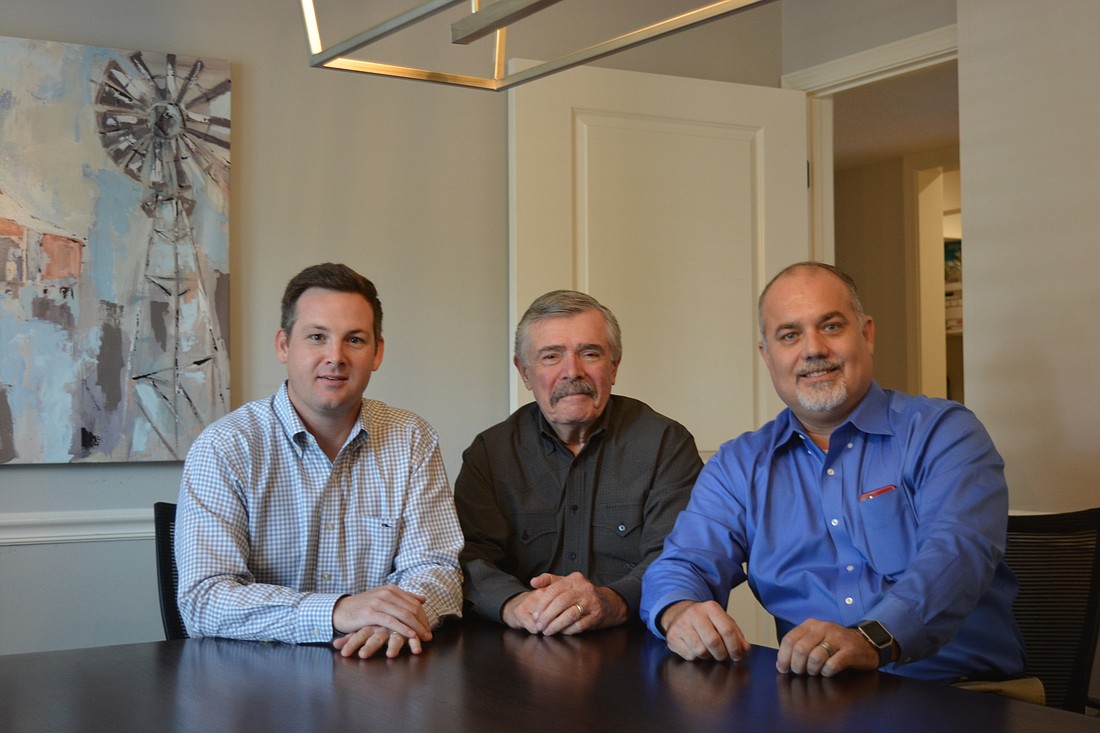- December 25, 2024
-
-
Loading

Loading

There’s no elephant in the room in Tampa Bay.
That’s the conclusion of commercial real estate brokerage firm Eshenbaugh Land Co.’s founder, Bill Eshenbaugh, on the state of the region’s residential real estate market.
“We had a little bit of a pause that began in the summer, but the sky is not falling, by any means,” says Eshenbaugh, whose Tampa-based firm is celebrating its silver anniversary this year.
“Mid-term elections always tend to impact the market somewhat, and the interest rate bump we’ve had certainly can’t be ignored, so there have been several things that have conspired to affect the market here, but the world is not over.
“We’re anticipating a good year for the market this year, and an equally good year next year,” he says.
Eshenbaugh’s feelings counterbalance those of Land Solutions Inc. CEO Randy Thibaut, who late last month cautioned that while the Southwest Florida market — comprising Charlotte, Lee and Collier counties — remains healthy, ominous signs are on the horizon that could push activity down in the years ahead.
For now, the Tampa market — comprising Hillsborough, Pinellas, Pasco, Polk, Manatee and Sarasota counties — continues to show steady, if not explosive, growth, with double-digit increases in detached residential permits in four of the area’s six counties between the final quarter of 2016 and Sept. 30 of this year.
Hillsborough, Polk and Manatee counties posted double-digit gains, with Manatee County leading the region with 14.5% growth.
In all, 17,834 building permits for single-family homes were pulled in the six counties year-over-year, an increase of 8.5%.
The two counties that saw decreases during that period, Pinellas and Pasco, had declines of just 7% and 2%, respectively, according to statistics compiled by Landmark Reports LLC, a Tampa-based data collection and analytics firm.
But the market’s nuances are impacting home and land sales for residential, multifamily and commercial developments alike, Eshenbaugh executives and Worley say.
Impact fees and the region’s urban service area affect the Tampa market as much as interest rate hikes and other factors, they say.
“Things are not slowing down, but I think it is getting harder to find quality properties within the urban service area,” says Ryan Sampson, an Eshenbaugh Land principal.
“If there’s a drop in permitting in the Tampa area, it won’t be because of a lack of demand but because the adequate supply of homes isn’t there,” Sampson says.
Meanwhile, rising land costs, waxing construction commodity prices and a labor shortage has pushed home builders to area like Plant City, Dade City and Zephyrhills, where land costs are lower.
Many builders also are studying the development of villa products, townhomes and other multifamily venues to augment single-family home communities.
Some are also trimming the space each residence has to keep buyers engaged. In 2013, for instance, the typical single-family home in the Tampa area measured 2,473 square feet. This year, the average is 2,323 square feet. Buyers appear to be willing to sacrifice gross space in favor of technological enhancements.
Market dominance also is playing a role. In Southwest Florida, for instance, a trio of builders collectively have about 35% of the total market. In the Tampa area, by contrast, Miami-based Lennar Corp. controls roughly 40% of market share, thanks in large part to a pair of high-profile mergers and acquisitions.
“As construction prices continue to climb, Lennar’s dominance gives them economies of scale that other builders don’t have, which, in turn, keeps overall development costs down,” Worley says.
For the year ahead, the trio believe that price-sensitive buyers, multifamily development and impact fees will dominate builders’ decision making.
"We’re anticipating a good year for the market this year, and an equally good year next year." — Bill Eshenbaugh
“I think we’ll see more sales into the future but lower prices,” Worley says. “And more age-targeted communities.”
Sampson agrees.
“The fundamentals are strong,” he says. “Job and population growth are continuing, and buyers are putting down real money.”
But impact fees could influence future sales. In Pasco County, impact fees comprise roughly $23,000 — or 10% of a home priced at $230,000. In Hillsborough County, that same fee is about $10,000 and in Manatee County it ranges from $10,000 to $15,000.
Those fees, too, will likely push more multifamily rental developments in Tampa Bay.
“Despite all the activity that we’ve had to date, there are more apartment guys coming into our market and putting land under contract with plans to develop over the next 18 to 24 months out,” Sampson says.
So while the Tampa area’s residential and land markets are showing signs of change, just as Southwest Florida is, Eshenbaugh doesn’t expect the market to derail anytime soon.
“Florida has had a spotlight shone on it, and Tampa has in particular,” he says. “And as a result, we’re seeing younger buyers and increased activity overall.”